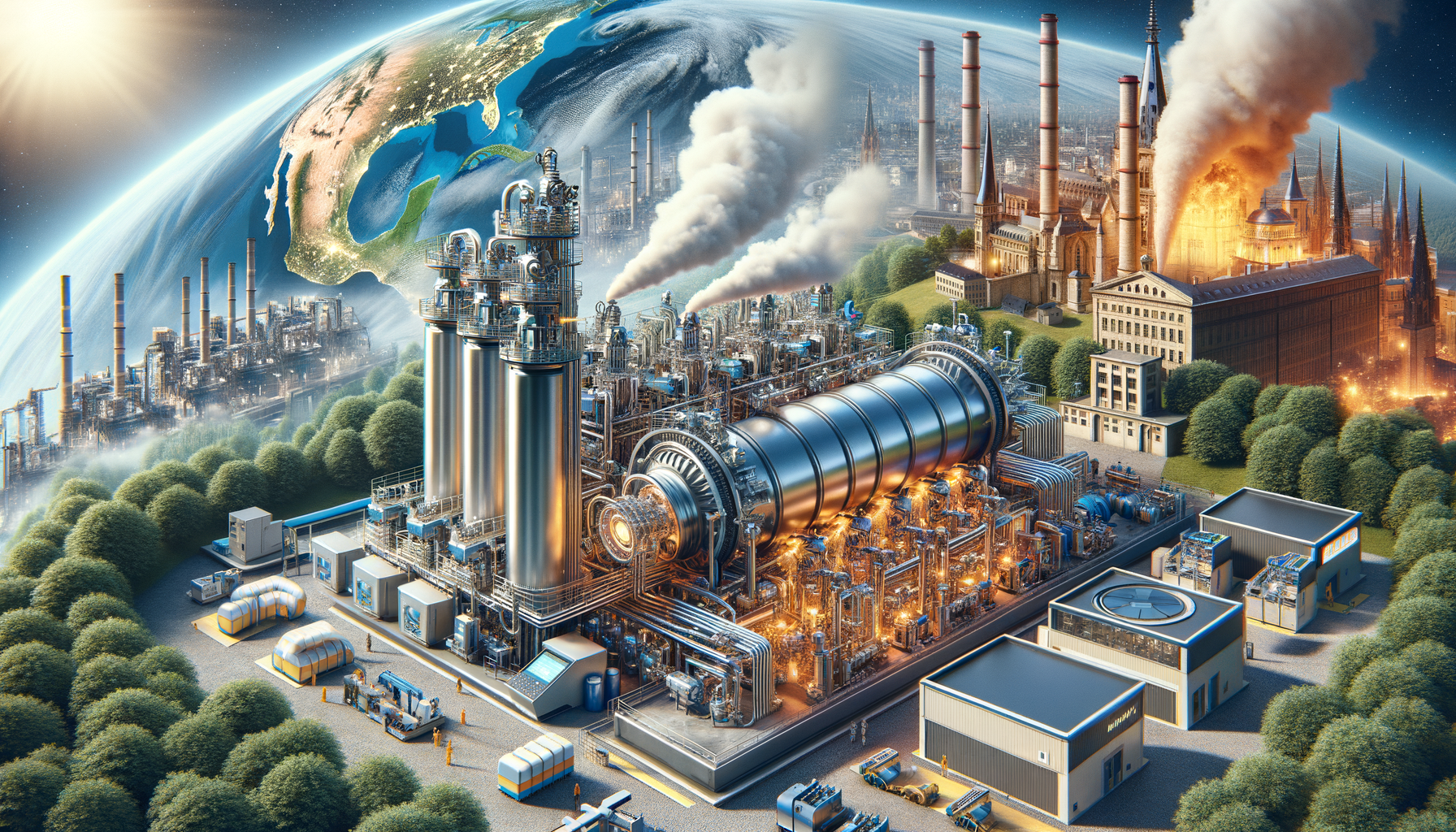Revolutionizing Industrial Processes: The Impact of Nitrogen Generators in Luxembourg
In the realm of industrial applications, the need for high-purity nitrogen is critical. Industries ranging from food and beverage to electronics and pharmaceuticals rely heavily on nitrogen for various processes such as inerting, blanketing, and packaging. In Luxembourg, a country known for its robust industrial sector, the adoption of nitrogen generators have become innovative

Understanding the Basics of Nitrogen Generators
Nitrogen generators are devices that produce nitrogen gas from atmospheric air. The air we breathe consists of approximately 78% nitrogen, and these generators separate nitrogen from the other components, primarily oxygen and trace gases. The two main types of nitrogen generators used in industries are Pressure Swing Adsorption (PSA) and Membrane Nitrogen Generators. PSA nitrogen generators operate by using carbon molecular sieves that selectively adsorb oxygen molecules under high pressure, allowing nitrogen to pass through. On the other hand, membrane nitrogen generators use a series of hollow fiber membranes through which compressed air is passed. The membranes allow nitrogen to permeate through while retaining oxygen and other gases.
The choice between PSA and membrane technologies often depends on the specific requirements of the industry, such as desired purity levels, volume, and pressure. PSA generators typically offer higher purity levels, making them suitable for industries where high-grade nitrogen is essential, such as electronics and pharmaceuticals. Membrane generators, although generally offering slightly lower purity, are favored for their simplicity and lower maintenance costs, making them ideal for applications like fire prevention and inerting.
Understanding these technologies is crucial for industries in Luxembourg as they strive to optimize their production processes. With the increasing demand for efficient and sustainable industrial solutions, nitrogen generators present a viable option, reducing reliance on traditional nitrogen supply methods such as gas cylinders or liquid nitrogen tanks.
The Role of Nitrogen Generators in Luxembourg’s Industrial Sector
Luxembourg, despite its small size, boasts a diverse and robust industrial sector, encompassing areas such as steel production, automotive components, and food processing. Nitrogen generators have become integral to these industries, providing a reliable and cost-effective source of nitrogen gas. In the steel industry, for instance, nitrogen is used for annealing and inerting, processes that require consistent and high-purity nitrogen to ensure the quality of steel products.
In the food and beverage industry, nitrogen is employed to extend the shelf life of products by reducing oxidation and spoilage. Modified atmosphere packaging (MAP), a technique widely used in food preservation, relies heavily on nitrogen to displace oxygen in packaging, thereby slowing down the degradation of perishable goods. This application is particularly relevant in Luxembourg, where the food industry plays a significant role in the economy.
Moreover, the pharmaceutical sector in Luxembourg benefits from nitrogen generators in various applications, including the preservation of sensitive materials and the prevention of contamination during production. The ability to generate nitrogen on-site ensures a continuous supply, which is crucial for maintaining operational efficiency and meeting stringent regulatory standards.
Advantages of On-Site Nitrogen Generation
One of the most compelling advantages of on-site nitrogen generation is the significant cost savings it offers. Traditional methods of nitrogen supply, such as purchasing bottled nitrogen or relying on liquid nitrogen deliveries, can be expensive due to transportation and storage costs. On-site nitrogen generators eliminate these expenses, providing a more economical solution for industries that require a constant supply of nitrogen.
Additionally, having an on-site nitrogen generator enhances operational efficiency by ensuring an uninterrupted supply of nitrogen. This is particularly important in industries where production processes cannot afford downtime caused by running out of gas or delays in delivery. With an on-site system, companies can produce nitrogen as needed, matching their specific consumption patterns and reducing waste.
From an environmental perspective, nitrogen generators contribute to sustainability efforts by reducing the carbon footprint associated with the transportation and storage of nitrogen gas. This aligns with Luxembourg’s commitment to environmental responsibility and sustainable industrial practices. By investing in on-site nitrogen generation, companies not only benefit financially but also support broader environmental goals.
Challenges and Considerations in Implementing Nitrogen Generators
While the benefits of nitrogen generators are substantial, there are challenges and considerations that industries must address when implementing these systems. One of the primary challenges is the initial capital investment required for purchasing and installing nitrogen generators. Although the long-term savings often justify the investment, companies must carefully evaluate their financial capacity and potential return on investment.
Another consideration is the maintenance and operational expertise needed to run nitrogen generators efficiently. Industries must ensure that they have the necessary technical support and trained personnel to manage the equipment. Regular maintenance is crucial to prevent downtime and ensure the generators operate at optimal efficiency.
Furthermore, companies must assess their specific nitrogen purity and volume requirements to select the appropriate generator type and configuration. This involves analyzing current and future production needs, as well as potential changes in demand. By thoroughly evaluating these factors, industries can make informed decisions and maximize the benefits of nitrogen generators in their operations.
Future Trends and Innovations in Nitrogen Generation
The future of nitrogen generation is poised for exciting developments, driven by technological advancements and the growing demand for sustainable industrial solutions. One emerging trend is the integration of smart technology into nitrogen generators, allowing for remote monitoring and control. This innovation enhances operational efficiency by enabling real-time data collection and analysis, helping industries optimize their nitrogen consumption and reduce waste.
Another area of innovation is the development of more energy-efficient nitrogen generators. Researchers are exploring ways to reduce the energy consumption of these systems, making them more environmentally friendly and cost-effective. This aligns with global efforts to reduce industrial energy use and minimize environmental impact.
As Luxembourg continues to position itself as a leader in sustainable industrial practices, the adoption of advanced nitrogen generation technologies will play a crucial role. By staying at the forefront of these trends, industries can enhance their competitiveness and contribute to a more sustainable future.